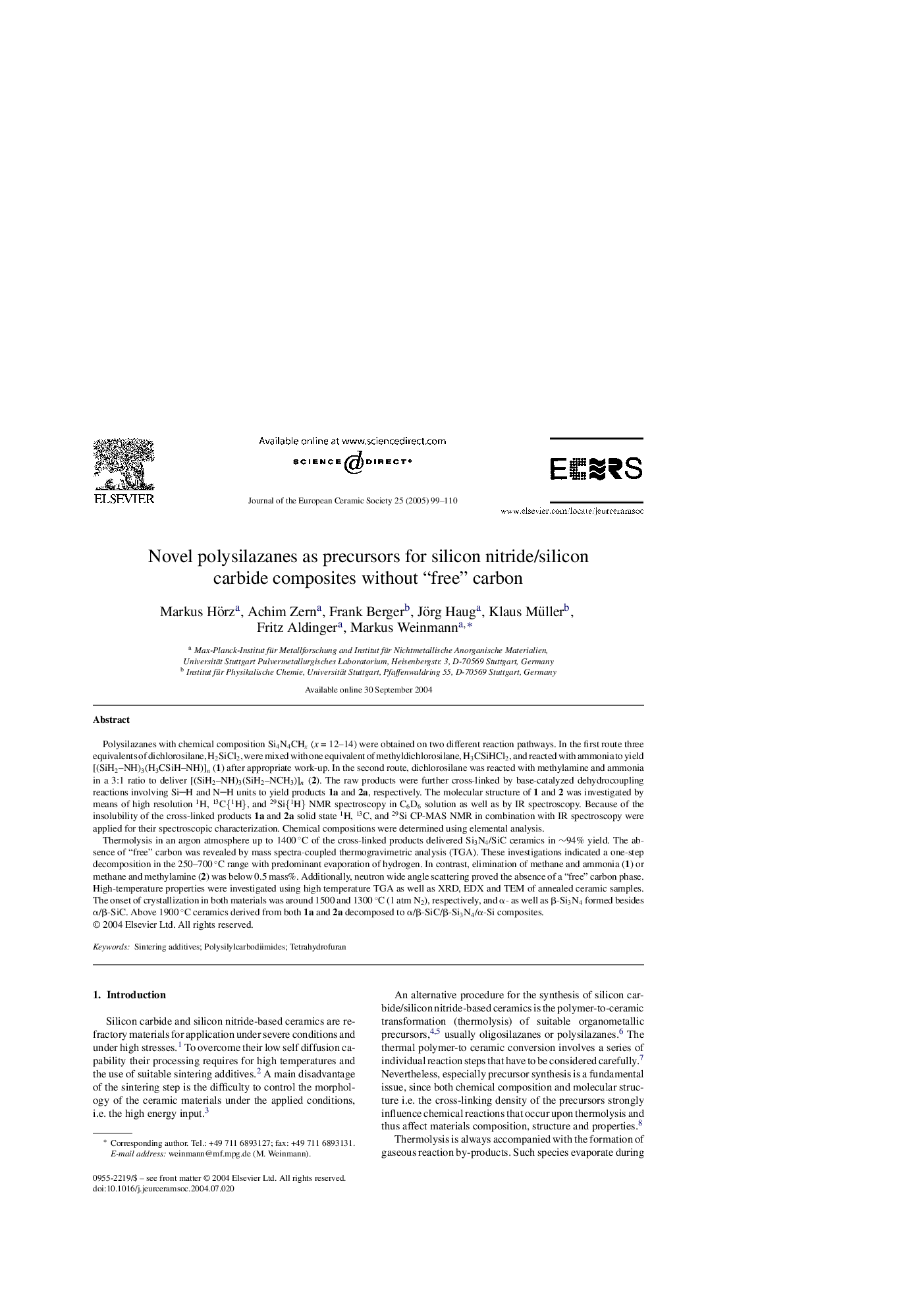| Article ID | Journal | Published Year | Pages | File Type |
|---|---|---|---|---|
| 9777939 | Journal of the European Ceramic Society | 2005 | 12 Pages |
Abstract
Thermolysis in an argon atmosphere up to 1400 °C of the cross-linked products delivered Si3N4/SiC ceramics in â¼94% yield. The absence of “free” carbon was revealed by mass spectra-coupled thermogravimetric analysis (TGA). These investigations indicated a one-step decomposition in the 250-700 °C range with predominant evaporation of hydrogen. In contrast, elimination of methane and ammonia (1) or methane and methylamine (2) was below 0.5 mass%. Additionally, neutron wide angle scattering proved the absence of a “free” carbon phase. High-temperature properties were investigated using high temperature TGA as well as XRD, EDX and TEM of annealed ceramic samples. The onset of crystallization in both materials was around 1500 and 1300 °C (1 atm N2), respectively, and α- as well as β-Si3N4 formed besides α/β-SiC. Above 1900 °C ceramics derived from both 1a and 2a decomposed to α/β-SiC/β-Si3N4/α-Si composites.
Keywords
Related Topics
Physical Sciences and Engineering
Materials Science
Ceramics and Composites
Authors
Markus Hörz, Achim Zern, Frank Berger, Jörg Haug, Klaus Müller, Fritz Aldinger, Markus Weinmann,
